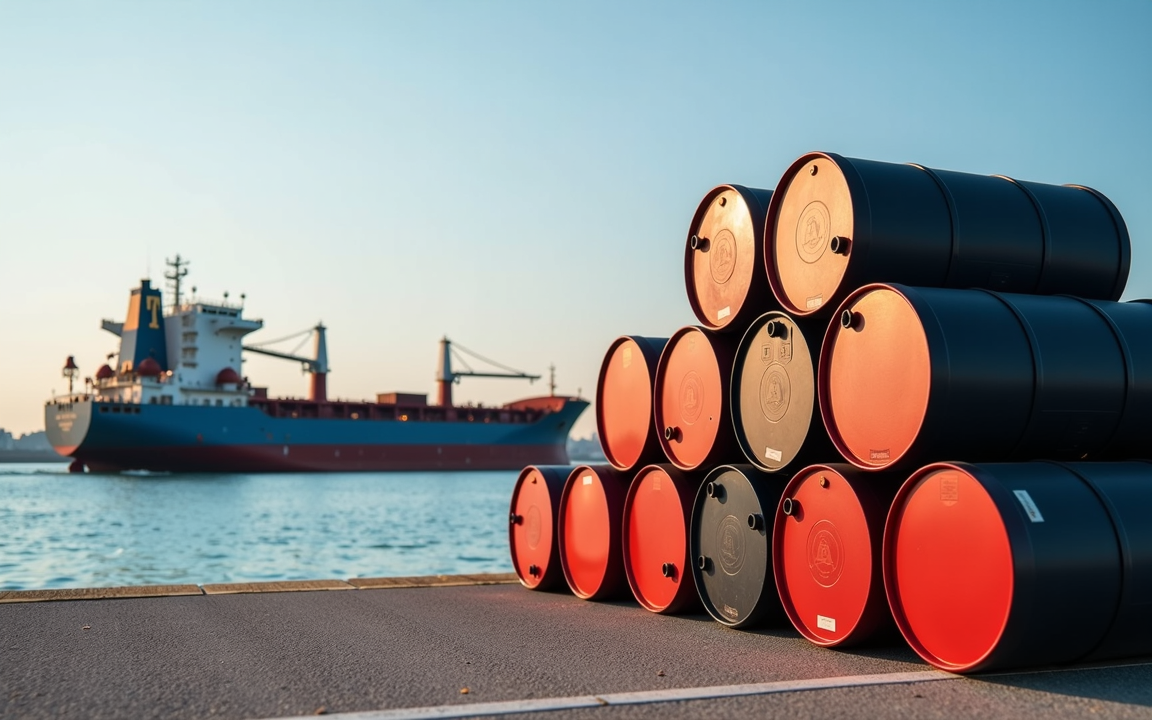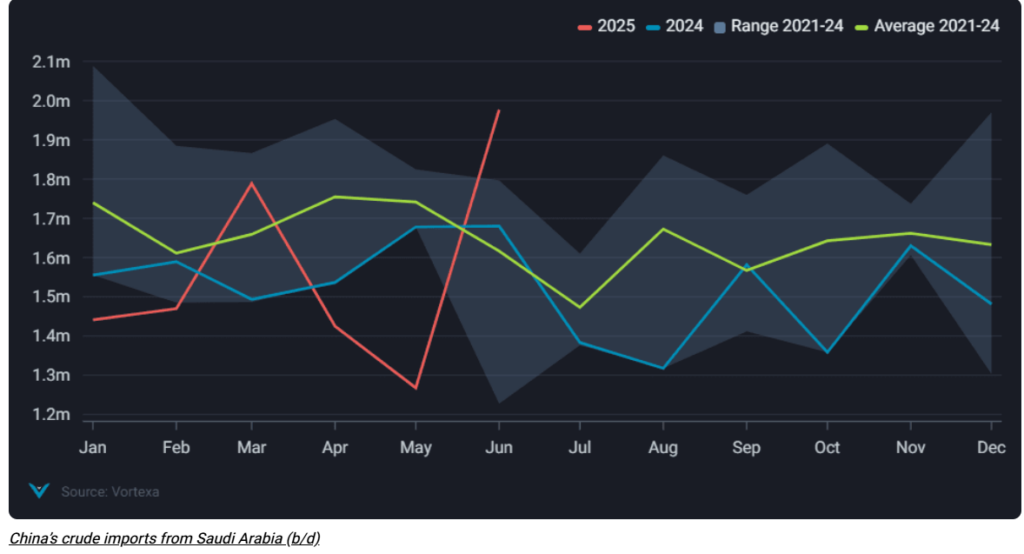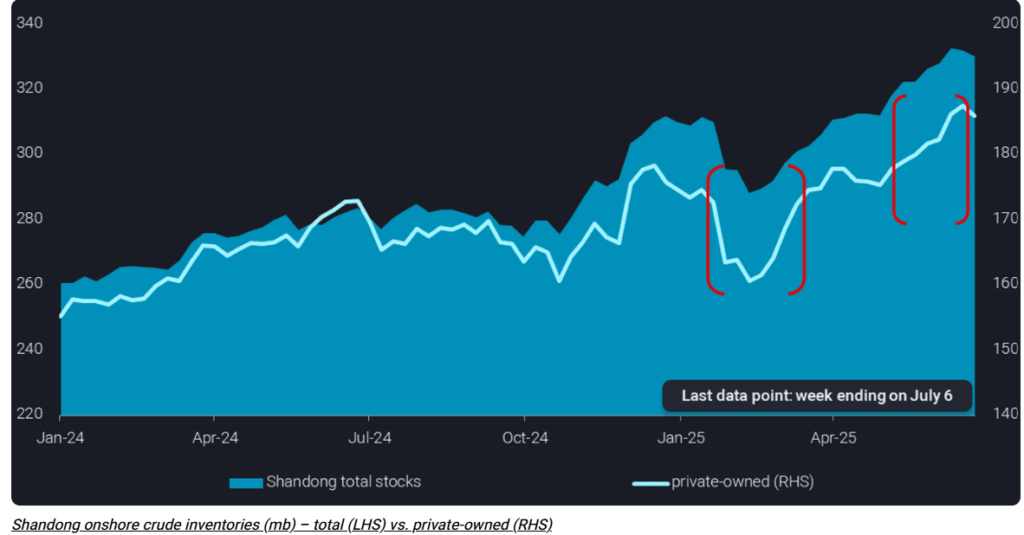
China’s import of Iranian crude oil continued to rise last month as shipments were close to the record highs touched in March, Vortexa said.
In June, China’s seaborne crude imports increased by 11% month-over-month and 6% year-over-year, reaching 10.6 million barrels per day, data from the shiptracking agency showed.
This rise occurred despite ongoing maintenance limiting overall refinery throughput to the lower end of the seasonal spectrum, Emma Li, senior market analyst at Vortexa said in a report.
Middle East imports and stocks
Strong inflows of Middle Eastern grades largely drove the increase in China’s imports, Li said.
China’s crude imports from Saudi surged to a 30-month high, nearing 2 million barrels a day (bpd), significantly exceeding the 1.5 million bpd average of the first five months due to aggressive cuts in May-loading OSPs (official selling price), data showed.

Additionally, imports from other non-sanctioned Middle Eastern suppliers, such as Iraq, the UAE, and Oman, experienced moderate increases.
China’s crude stockbuild paused in the latter half of June due to a decline in imports from other regions.
This comes after a period in April and May where stocks had been increasing by over 1 million barrels per day, Vortexa data showed.
Crude inventories onshore, excluding the underground Strategic Petroleum Reserve (SPR), hit an unprecedented 1.09 billion barrels in the week concluding on June 22, subsequently declining over the next three weeks, the agency noted.
Li said:
China’s crude inventories could pick up again in August, driven by the arrival of cargoes purchased in the wake of the recent benchmark price collapse.
How sanctions evasion tactics are evolving
In June, China’s imports of Iranian crude oil saw a significant rebound, soaring to over 1.7 million bpd from May’s low of 1.1 million bpd, Vortexa data showed.
This surge occurred despite a continued decline in run rates at Shandong’s teapot refineries, which are anticipated to remain weak in July due to delayed maintenance, Li said.
The spike in flows was driven by geopolitical and logistical factors.
Prompted by the Israel-Iran conflict, Iran and its affiliated traders accelerated crude shipments eastward, steering clear of potential strike zones.
In June, Iranian crude and condensate exports reached a record 1.9 million bpd, according to Vortexa.
Crude loadings initially peaked at 2.5 million bpd between June 1 and 12, just prior to Israel’s strike.
However, over the subsequent 10 days, these loadings decreased to 1.2 million bpd, the data showed.
Meanwhile, elevated levels of Iranian crude on water continued into July, with loadings experiencing a rebound to 1.7 million bpd starting in late June.
While unlikely to halt Iranian oil flows, ongoing US tanker sanctions will continue to fuel robust demand for “clean” tankers, enabling compliant ship-to-ship (STS) operations.
Additionally, in June, Shandong’s onshore crude inventories increased by almost 20 million barrels.
This rise correlates with the increase in Iranian crude arrivals, especially as refinery crude consumption did not experience a parallel uptick, Li said.
Flexible workaround
Vortexa’s Li added:
What June data reveals is a faster and more flexible workaround to secure feedstock in the face of perceived supply disruptions.
In contrast to March’s significant stock buildup, which was fueled by restocking demands following a series of US tanker sanctions since December, the recent surge in Chinese imports was unexpected.

It stemmed from the improbable possibility of a US-Iran nuclear agreement, suggesting an immediate increase in Iranian oil shipments and imports.
“Now, with ample onshore and floating storage near China and no major disruptions in seaborne logistics, teapot refiners have greater leverage to negotiate deeper discounts,” Li said.
In July, Iranian crude was offered at $4 per barrel below Brent, a wider discount compared to approximately $2 per barrel in May, according to Vortexa.
The post China’s Iranian oil imports near record highs as traders circumvent sanctions appeared first on Invezz

